How To Make 3d Models In Minecraft
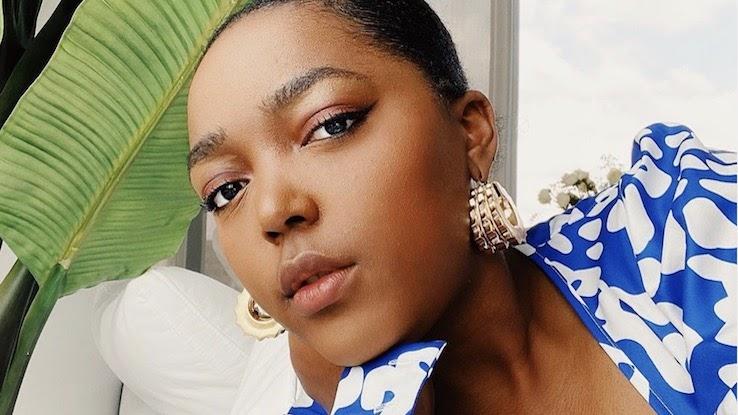
Anifa Mvuemba had major plans to showcase her fashion line, Hanifa, at New York Fashion Week for the first time and was looking forward to doing so. Nevertheless, once the coronavirus pandemic struck, the major fashion upshot was canceled, leaving Mvuemba to envision some other mode to highlight her brand. She put her creative listen to work and came up with a trailblazing, futuristic idea that ultimately sparked discussions about the future of the fashion world.
The designer used stunning 3D engineering to show off her apparel on Instagram Telly, garnering instant attention across the globe. Later her innovative show captivated the globe, what could be adjacent for Mvuemba and other fashion labels?
Pink Label Congo: Mvuemba Blends Heritage, Necessity and Technology
Twenty-nine-year-onetime Mvuemba migrated to the United states of america with her family from the Autonomous Republic of the Congo when she was a toddler, and she specifically draws from her heritage every bit she creates. The young designer'southward habitation country and the "gentleness, beauty, history, poise, majesty, force, power and promise of the Congolese spirit" served as the principal inspirations for her Pink Label Congo drove, which she created under the umbrella of her main manner line, Hanifa, that launched in 2012. The well-rounded Pinkish Label Congo line features maxi dresses, one-shoulder tops, jumpsuits, skirts and other pieces in sizes ranging from 0 to xx.
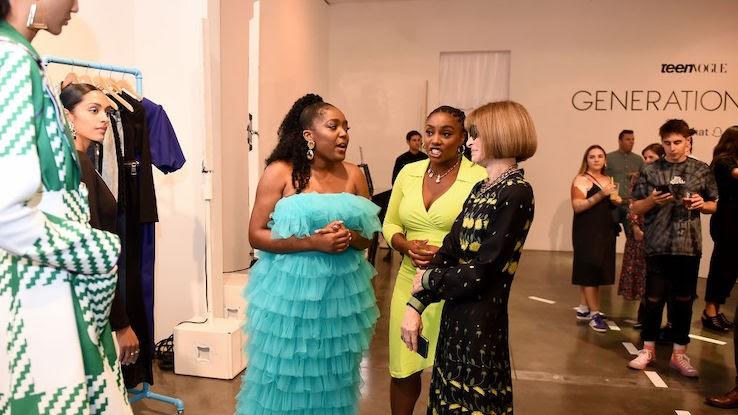
"When creating each piece, I was reminded of the stories my mother told me of the women she knew back home in Congo. Women who suffered great loss but still mustered every ounce of force every twenty-four hours to bear witness upwards," the designer shared on the brand'south Instagram page. "My hope is that this collection inspires all women to stand tall in their power and like the Democratic Republic of Congo, to utilize their history, whether pretty or painful — to redesign their future." The designer kept women in mind as she worked to create a groundbreaking show for her collection.
Later her Fashion Calendar week dream was cut short, Mvuemba came up with a unique idea: apply motion technology instead of living, breathing people to brandish apparel. She already loved the idea of realistic 3D animation and had looked into utilizing this technique in her work before the pandemic hitting. While working with a developer on using animation software for her designs, Mvuemba was experimenting with the technology herself during quarantine. A solution clicked, and the idea to host a 3D show that everyone, non just Fashion Week attendees, could safely watch right from their homes was born.
Though the thought was genius, the piece of work behind the scenes to pull this off was painstaking, according to the designer. In lodge to brand this happen, Mvuemba had to turn each outfit she had designed for Pinkish Label Congo into a 3D image. Those images then had to be perfectly fitted on the body of an avatar in order for the garments non to slide off while the avatars were in motion.
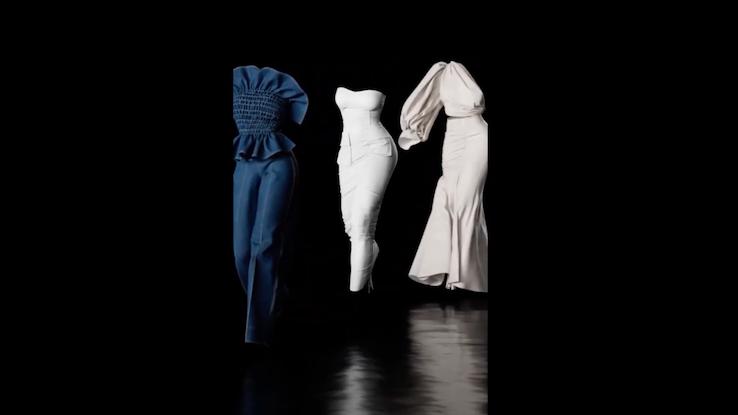
After working out the kinks, the designer posted her own virtual style testify for the drove on IGTV, Instagram's standalone video application. The show appeared to be a real, in-person effect, except at that place were no bodily models on the runway. "I wanted information technology to happen in real-time so that viewers could experience information technology the fashion they would at a real mode evidence," Mvuemba told Fast Company. "If yous were there, you lot were there."
The Instagram show was eerie however captivating, with the avatars looking like a line of invisible bodies filling the garments and showcasing the movement of each of Mvuemba's designs. Simply the focus quickly pivoted abroad from the avatars' novelty factor; without human models wearing the clothing, the colors and details of each outfit came to life, popping out against the blackness properties the designer used. Because the avatars added shape to the clothes but were invisible, viewers could meet some of the detailing and sewn construction inside the garments, too.
The virtual evidence quickly went viral, with people around the world seeing Mvuemba'due south designs for the first time. The amount of attention this innovative evidence garnered ultimately helped her grow her business in spite of the pandemic causing commerce to come to a standstill. Pink Label Congo sold out, and Mvuemba signed with Black-endemic public relations firm The Hinton Group to correspond Hanifa.
How Will the Coronavirus Pandemic and Digital Models Impact the Fashion Industry?
Both Hanifa'southward virtual fashion show and the furnishings of coronavirus effectually the globe have many style experts and buyers contemplating what the fashion earth will await similar once the pandemic subsides and the industry is able to return to something that resembles normal operations. There will certainly have to be major changes, especially at get-go.
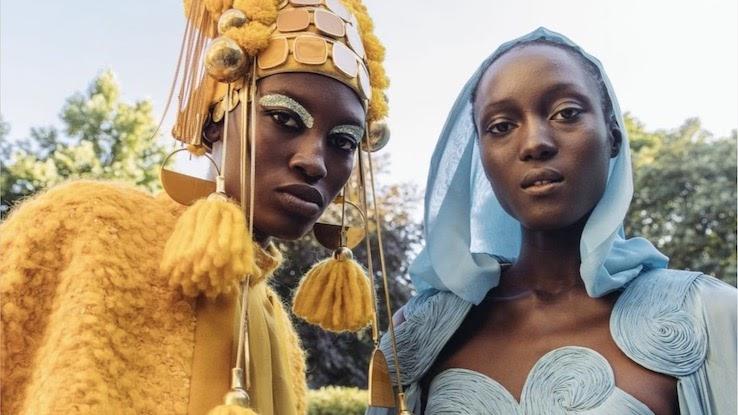
Consider just the idea of social distancing with in-person events similar rails shows. How far apart will people have to exist spaced at these events, and how many will fifty-fifty be immune into an event space? Is it possible, particularly with the success of Mvuemba'due south prove, that more than runway shows and other fashion events will become virtual? With the use of remote effect platforms similar BigMarker and Hopin, it's possible that mode houses and agencies could host events for more people to join from beyond the earth at home.
With this 3D technology, it could exist possible that fewer models volition be used for shows — and some critics may encounter this as a stride back for representation. While many were inspired and excited by Mvuemba'due south incredible result, others were nervous about what it could mean for the future. Some mentioned the fact that Mvuemba is ane of a few designers who use almost all Black models in their shows.
If more designers switch over to 3D shows, it could non just have abroad jobs from models of underrepresented races and sizes, but it could also limit representation of more diverse models in fashion as a whole. This is something that the industry is really merely beginning to focus on, with much of the endeavour coming from indie designers — and fashion should be striving for more than racial diversity, not bypassing it for digital innovation. Mvuemba has acknowledged this as a "valid business" only also assured supporters that she would never "exclusively utilise engineering science to replace people. I similar working with real models as well much."
The Fashion World Reckons With Long-Term Changes — Not Only Invisible Avatars
Like many industries, the fashion industry has taken a hard hit because of the coronavirus pandemic. Article of clothing sales have plummeted by 34% since much of the world became unable to store at malls or stores. Designers, and brick-and-mortar shops peculiarly, may accept to consider creating or updating websites to sell apparel and accessories online. They'll also have to think seriously most expanding their size ranges to continue up with growing calls from consumers for more than diversity and size inclusivity.
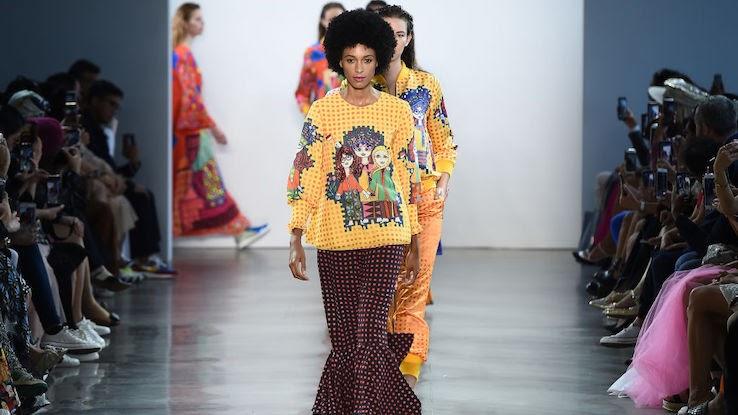
Another major consideration for the future? Sustainability. The immense pollution that the fashion industry is responsible for — peculiarly the "fast fashion" industry — has been a conversation for quite some time. The industry'southward manufacturing and other activities produce about 1.2 billion tons of carbon emissions per year. "[The coronavirus] is going to accelerate the fashion industry's engagement with digital technology, and its want to rethink the fashion calendar, merely it will too advance the approach to sustainability and building responsible businesses," Anna Wintour said in an interview. "That means using supply chains that are creating clothing in a circular way and tak[ing] into business relationship the bear upon on the planet and the people who brand our clothes." It appears that, afterward this pandemic ends, the fashion industry will have to make major changes to keep up with a hereafter and with consumers that are both enervating more.
Source: https://www.ask.com/culture/anifa-mvuemba-virtual-runway-collection-changing-fashion?utm_content=params%3Ao%3D740004%26ad%3DdirN%26qo%3DserpIndex&ueid=f974c057-89d9-4206-8389-78ca7198bf43
Posted by: bellantoniprecalf.blogspot.com

0 Response to "How To Make 3d Models In Minecraft"
Post a Comment